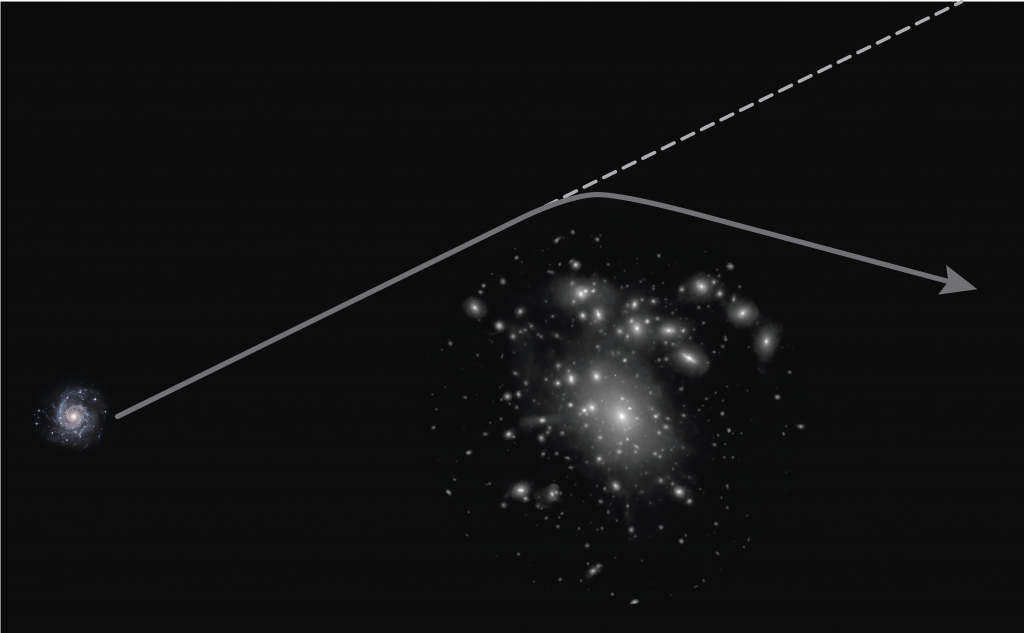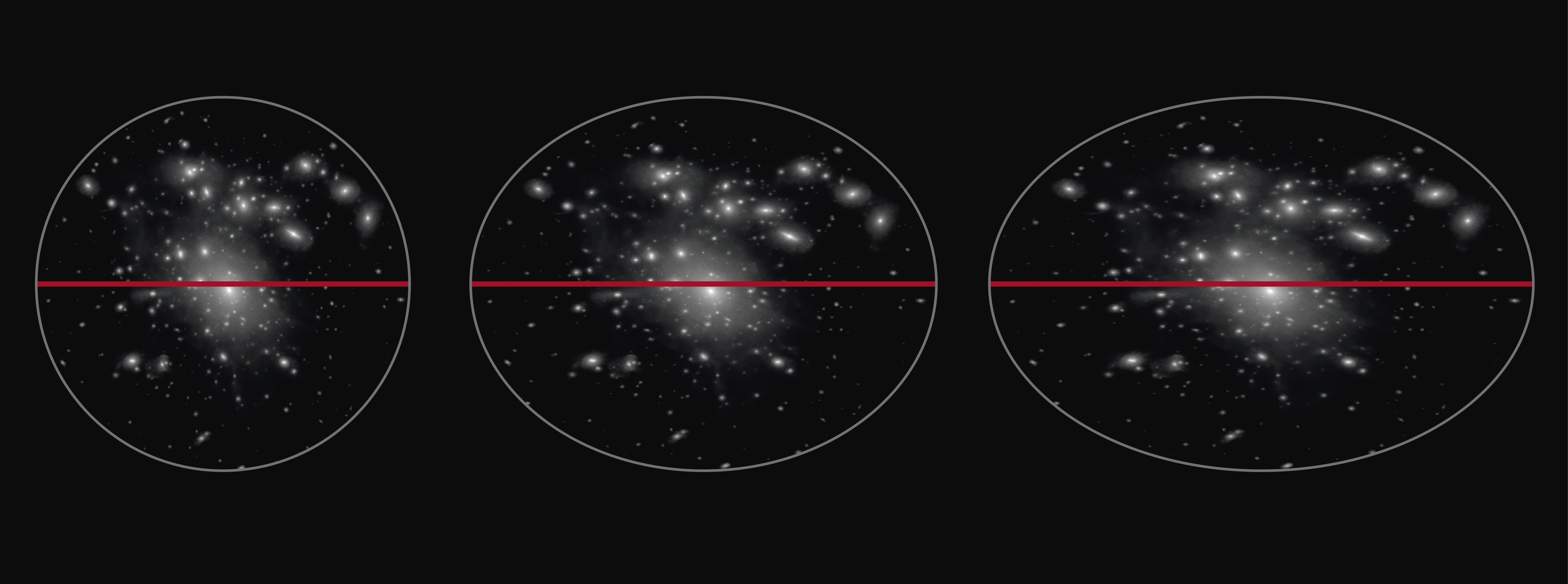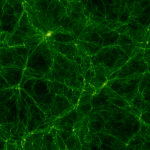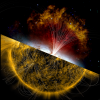
An international research team led by Elizabeth Gonzalez of the Institute of Theoretical and Experimental Astronomy (IATE) analysed how matter is distributed in galaxy clusters, using an effect called 'gravitational lensing'.
By Facundo Rodriguez
facundo.rodriguez@unc.edu.ar
Galaxies tend to cluster together and can form systems ranging from a few members to clusters of hundreds. The latter belong to the most massive systems we can find in the universe. However, only a small part of their mass comes from the galaxies that we observe, most of it comes from material that does not emit radiation: the 'dark matter'. This matter forms large 'halos' within which there are both galaxies and groups of galaxies. Understanding the characteristics of this type of matter and how it is distributed is one of the challenges of cosmology today.
Lenses in the universe
To determine how is distributed the matter in the clusters, the team used a technique called 'weak gravitational lensing'. This is based on a simple principle: when passing close to very massive objects, the light from objects behind them changes their trajectory and their observed shape is distorted. Because galaxy clusters have several trillion times the Sun mass, the light from the galaxies behind them is modified as they pass by and these distortions allow us to analyse how the matter is distributed.

The bending effect of a beam of light emitted by a galaxy due to the presence of a cluster of galaxies. Designed by Rocío Rodríguez.
Although clusters are very massive, the distortions created in the images of the galaxies behind them can be tiny. Therefore, a large number of galaxies are used to determine these distortions and an average distortion is obtained. To do this, a set of clusters with similar properties is taken and the average effect on them is analysed.
In the analysis of the clusters, they took into account how the lens effect changes concerning an axis and thus determined how 'stretched' is the cluster matter compared to a spherical distribution.

Scheme of galaxy clusters with different distributions of matter. Designed by Rocío Rodríguez.
Data & Team
One of the main sources of data for this article, recently published in Monthly Notices of the Royal Astronomical Society journal, was the public catalogue generated by the Canada, France, Hawaii Telescope Stripe 82 (CS82) project. This project was made possible thanks Brazil acquired a fraction of the observing time from this telescope. This gave rise to several international collaborations, among them, this study.
Elizabeth Gonzalez did a post-doc at the Centro Brasileiro de Pesquisas FísicasHer main topic was to analyze the matter distribution of clusters using weak gravitational lensing techniques. Because of this, her working group is composed of both researchers linked to that institution, such as Martin Makler, and also members of IATE: Diego Garcia Lambas and Martin Chalela.
"To carry out projects like this, access to data is essential, since astronomy and physics are sciences that need data. Often developing countries do not have a certain infrastructure, as in this case. However, they can invest and access the data," says Martin Makler, who was director of the Elizabeth post-doctoral grant in Brazil and is currently a researcher at CONICET and Universidad de San Martín.
Results
From the analyses performed, the main result is that the elongation of the dark matter halos containing the studied galaxy clusters was accurately determined. Also, Elizabeth Gonzalez says: "We went one step further and were able to see how the dark matter was distributed, both in the inner and outer regions. We also compared the shape of the halos of the clusters with more and fewer galaxies, which would be more and less massive clusters, and those that are closer and further away". And, he adds: "These results allowed us to ask new questions and to develop new projects, which we are working on".
"Some of the results do not correspond to what would be expected with the most currently used model of the universe. Our idea now is to try to understand if that is simply the fact that we don't have much accuracy or if it is a real physical phenomenon. As a result, we are doing some studies in simulations, and there is also the possibility of redoing this study with even more precise data and with a larger volume. These are two new directions and both involve several interesting stakes," explains Martin Makler.
Diego García Lambas, who, in addition to participating in the project, is the director of IATE and has vast experience in the study of the large structures of the universe, concludes that "continuing with these projects is fundamental because the shape of the dark matter halos is an extraordinary cosmological test. Furthermore, although other studies focus on the mass of the clusters, understanding the shape of the halos containing these clusters gives us a great deal of information, because it also relates to how these systems originate and evolve".
Scientific publication |
| Measuring the surface mass density ellipticity of redMaPPer galaxy clusters using weak-lensing Autores | Elizabeth J. Gonzalez, Martín Makler, Diego García Lambas, Martín Chalela, Maria E. S. Pereira, Ludovic Van Waerbeke, HuanYuan Shan, Thomas Erben |








